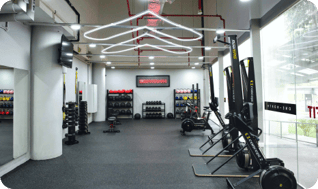In Singapore, podiatry is part of Allied Health, focusing on the care, diagnosis, and treatment of conditions affecting the foot, lower limbs, and their related structures. Podiatrists must have a degree from a recognized university, usually from countries like Australia or the United Kingdom, as approved by the Ministry of Health. Additionally, they are required to maintain registration with regulatory bodies such as the HCPC in the UK or AHPRA in Australia.
Myth: Podiatrists Only Treat Toenail Problems
It is a misconception that podiatrists only handle toenail issues. While they do address concerns like ingrown toenails, their expertise extends far beyond this. Podiatrists are trained to diagnose and treat a variety of foot and ankle conditions, including heel pain, plantar fasciitis, sprains, and fractures. They also play a significant role in sports medicine, providing care for athletes suffering from foot and ankle injuries, showcasing their comprehensive skill set beyond toenail problems.
Myth: Flat Feet Exempt You from National Service
Around 30% of Singapore’s population has flat feet, which is a normal anatomical variation. However, having flat feet does not necessarily mean you will experience foot pain. Some individuals may experience discomfort in the arch or heel, but this is not universally the case for everyone with flat feet.
Should I Stick to My Usual Shoe Size?
Many people encounter foot problems due to wearing ill-fitting shoes. In Singapore, where various types of footwear are commonly worn, from ballet flats to athletic shoes, it’s essential to select the right shoe for your foot type to avoid future issues. Relying on the same size across all shoe types may lead to problems over time.
Myth: Expensive Running Shoes Improve Performance

It’s a common misconception that pricier shoes, such as carbon-plated running shoes, will automatically improve running performance. However, about 85% of runners are actually wearing shoes that don’t suit their foot structure. Without a proper dynamic pressure analysis, even expensive shoes could worsen foot conditions rather than help.
Myth: Foot Pain is Inevitable with Age
Heel pain is one of the most frequent complaints in Singapore, with 43% of people experiencing it last year. Working from home and walking barefoot on hard surfaces may contribute to this discomfort. Wearing appropriate home footwear can alleviate pain, and over 90% of individuals find relief after consulting a podiatrist.
Do Bunions Run in Families?
Bunions can have a genetic component, often linked to inherited foot structures. However, they can also develop due to other factors, such as flat feet, flexible ligaments, or improper footwear like narrow heels. Fortunately, there are non-surgical ways to address the underlying causes and prevent the need for surgery.
Can a Podiatrist Help My Child “Grow an Arch”?
The notion of "growing an arch" suggests that flat feet in children are abnormal, which is incorrect. Flat feet are typical in infants and young children due to natural factors like loose joints and baby fat pads. Most children develop an arch by age six, though about 20% may retain flat feet, which is not necessarily problematic.
Does Every Child Need a Podiatry Check-Up?

Pediatric podiatry aims to support the healthy development of children’s feet. While not every child needs podiatric care, in some cases, conservative measures may be suggested. These may include custom devices like braces or insoles, much like orthodontic braces for teeth, to ensure proper growth and functionality.
Myth: Podiatry Is All About Feet and Nothing Else
Podiatry covers a broad spectrum of lower limb health, from childhood to old age, and involves everything from walking to high-intensity activities like ultramarathons. Modern podiatrists utilize advanced technology, such as 3D printing and AI, to create personalized treatment plans. This field is far from boring, as it has the potential to significantly enhance people’s mobility and overall quality of life.


.png?width=301&height=187&name=Website%20Navigation%20Images%20(3).png)

-1.jpg?width=1984&height=1196&name=UFIT%20Club%20Street%20Front%20(4)-1.jpg)






